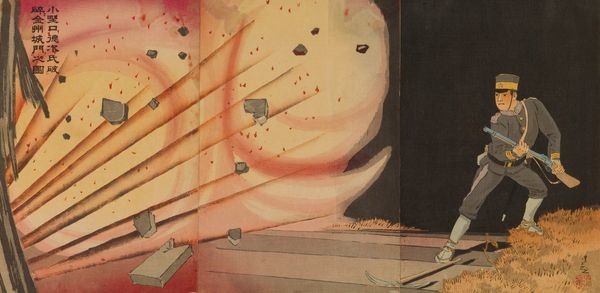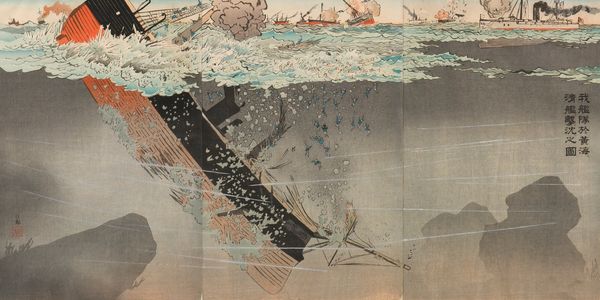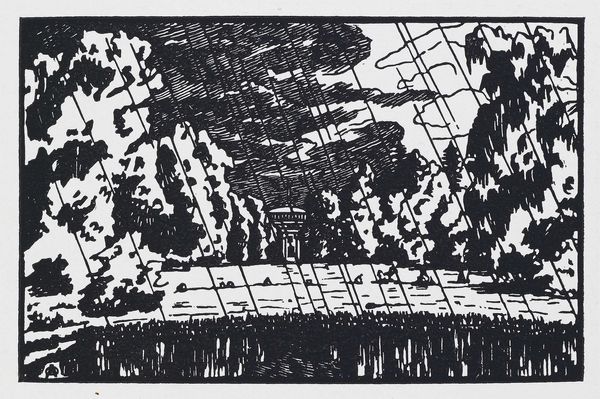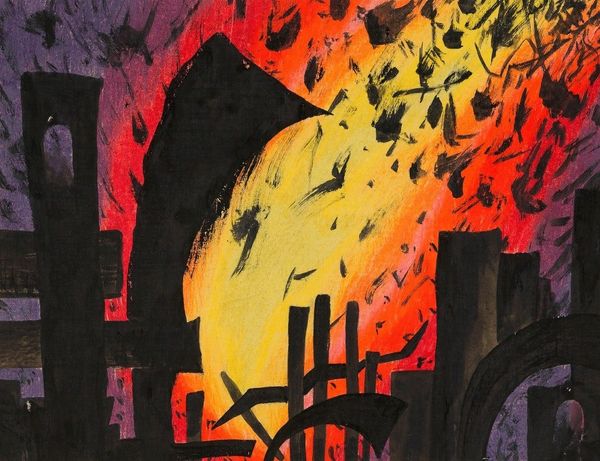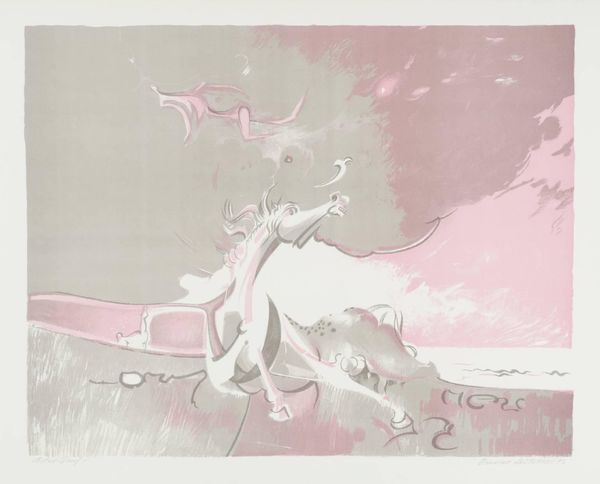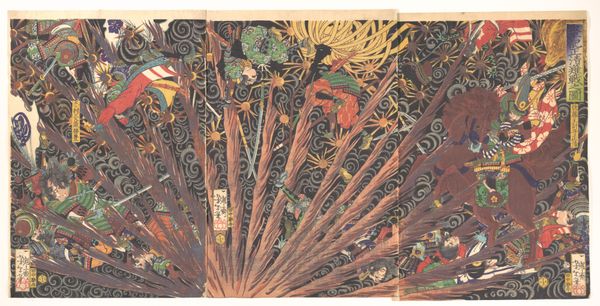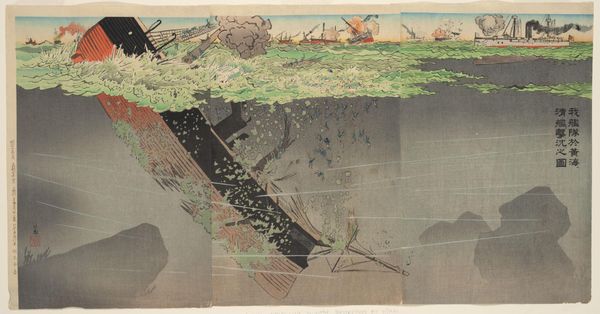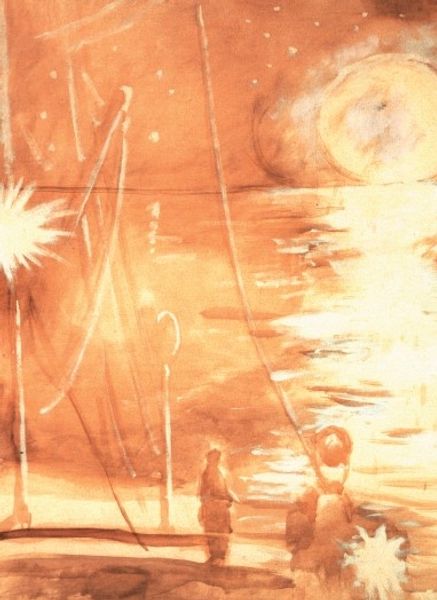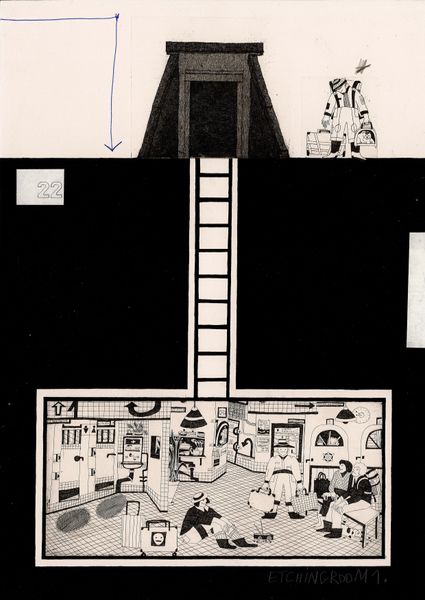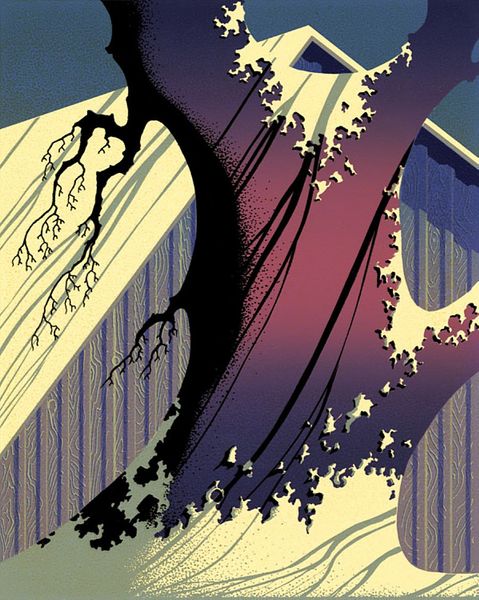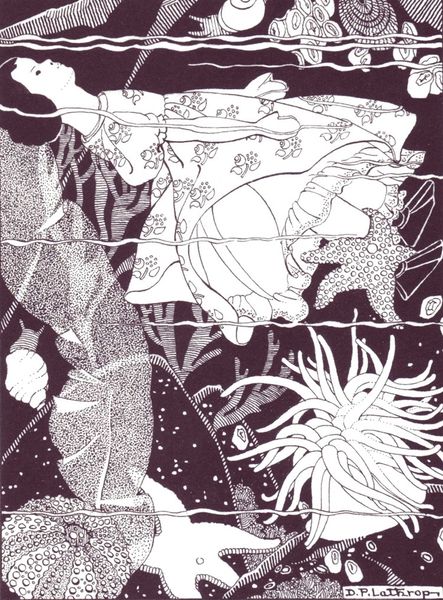
The Ghost of Akugenta Taking Revenge on Nanba at the Nunobiki Waterfall 1856
0:00
0:00
print, woodblock-print
#
narrative-art
# print
#
asian-art
#
ukiyo-e
#
figuration
#
woodblock-print
#
men
#
genre-painting
Dimensions: Vertical ōban; Image (each): 14 1/2 × 9 3/4 in. (36.8 × 24.8 cm)
Copyright: Public Domain
Curator: This dramatic triptych, titled "The Ghost of Akugenta Taking Revenge on Nanba at the Nunobiki Waterfall", was created by Utagawa Yoshifusa in 1856. Editor: It’s quite visually arresting. The dominant graphic element seems to be emanating rays of some kind, directing my gaze every which way! And the palette is very dramatic. Curator: Indeed, these linear elements cut across the entire composition, originating from a spectral figure rendered in almost incandescent colors at the center. From an iconographic point of view, they illustrate Akugenta's vengeful power. In Japanese folklore, waterfalls are often associated with spiritual or supernatural encounters. Editor: From a purely structural standpoint, those beams serve to fragment the picture plane while simultaneously unifying it across the three panels, and the sharp contrasts emphasize spatial depth, despite the relatively flat perspective typical of ukiyo-e prints. Curator: Absolutely. And it's a striking visual metaphor for spiritual vengeance piercing through reality. Waterfalls in art, specifically, can represent purification, transition, or even a point of no return. This work is brimming with powerful symbolism related to retribution. Editor: The figures, arranged dynamically and reacting to the supernatural event, showcase excellent use of line and form, and notice how their varied costumes denote rank within their fallen warrior band, creating an additional compositional layer. Curator: That kind of minute detailing points towards a deeper understanding of Japanese societal structures and belief systems at play. The print also functions as a moral lesson about the consequences of betrayal and the inevitability of karmic justice. Editor: So, it’s a fascinating artwork that balances a keen understanding of visual mechanics with the potency of myth. Curator: Yes, precisely. And the result, in this instance, is both historically and artistically significant, making for an intriguing artistic experience.
Comments
No comments
Be the first to comment and join the conversation on the ultimate creative platform.
